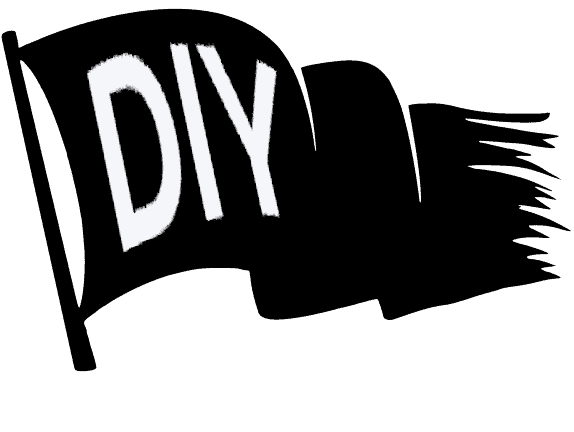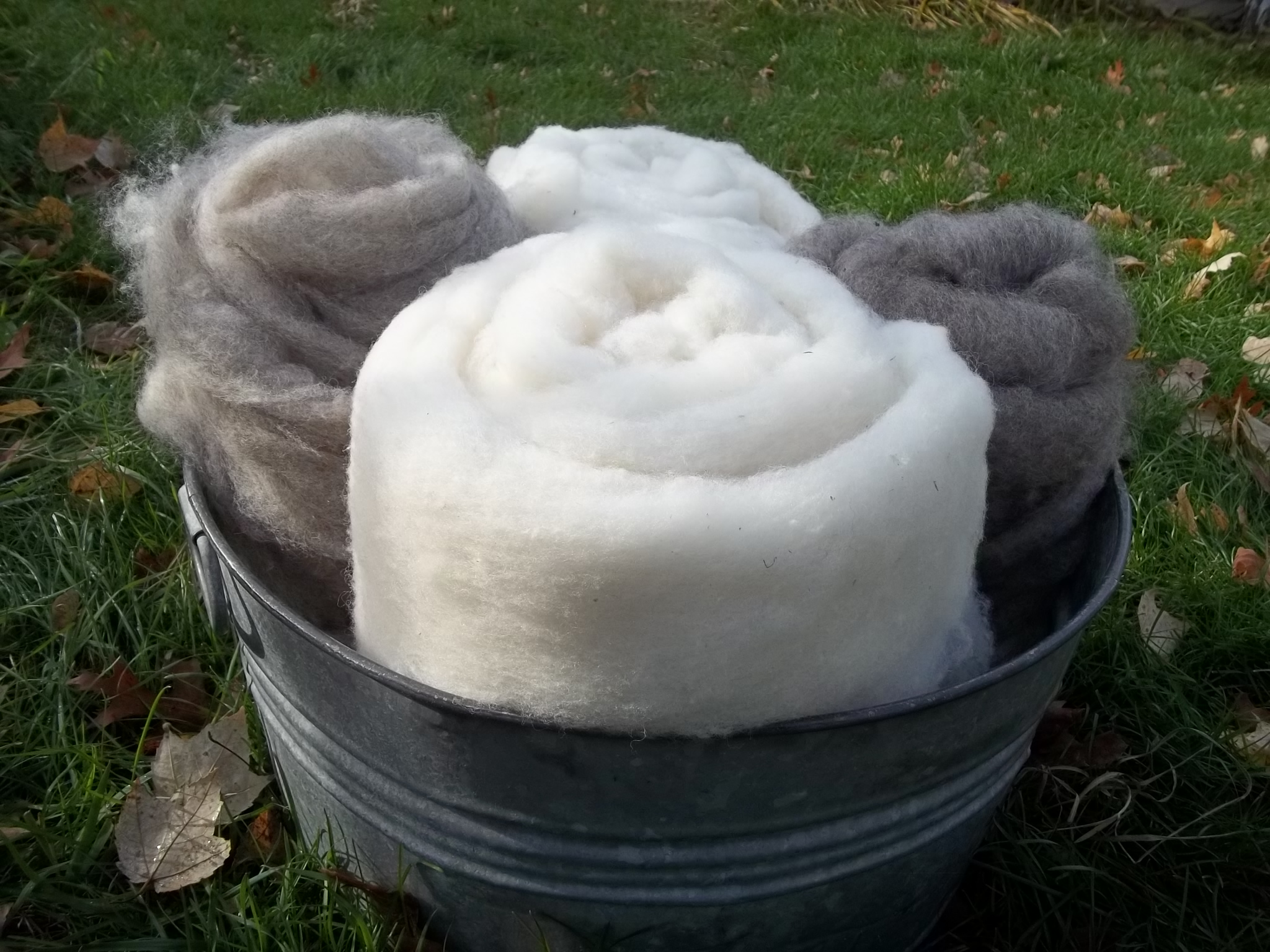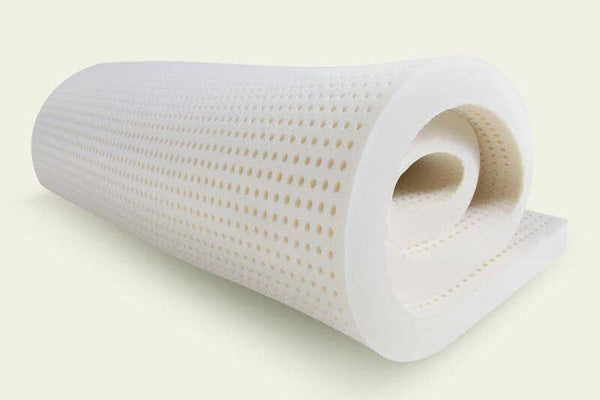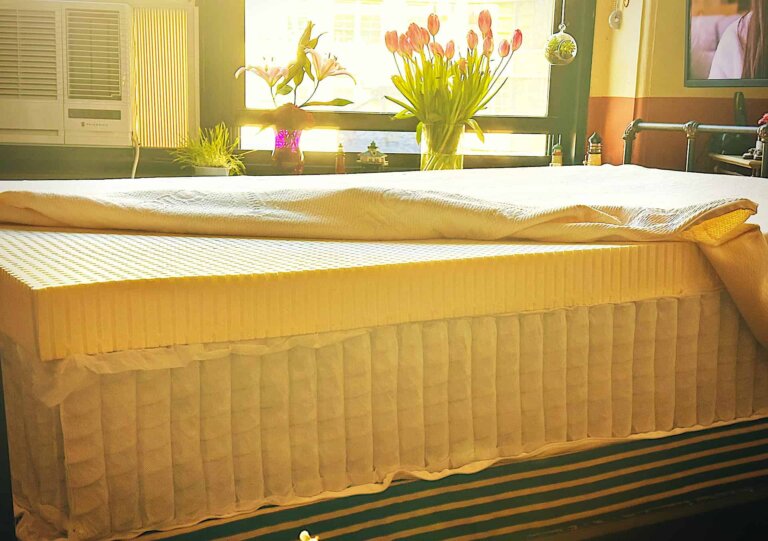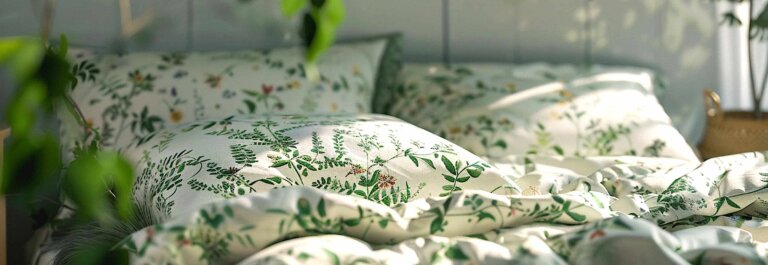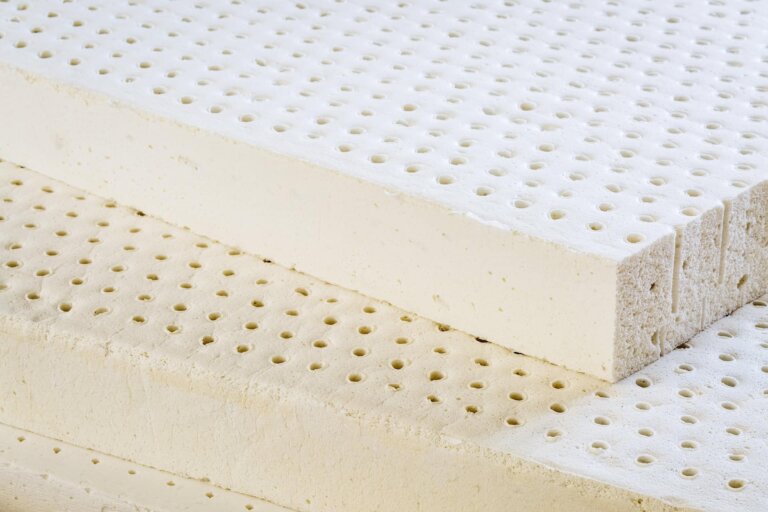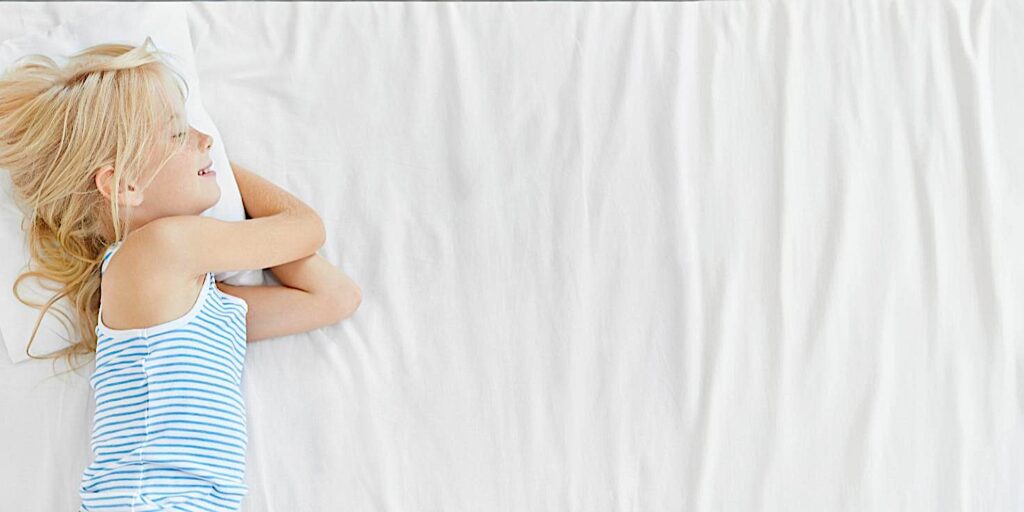
An Organic DIY Child’s Mattress (with Room to Grow)
Last modified on:
Your Child Deserves a Safe & Clean Bed
Many mass-produced children’s beds are made with polyurethane foams, flame-retardant chemicals, and adhesives that can off-gas for years.
New reports are emerging that show alarming levels of potentially health-disrupting chemicals in kids’ mattresses.
A study published in Environmental Pollution and reported by CNN found that children are especially vulnerable to the VOCs (volatile organic compounds) released by some mass-produced mattress materials during sleep.
By choosing organic materials, you’re creating a healthy sleep environment that supports your child’s development.
Why Build an Expandable DIY Child’s Mattress?
Your child is constantly growing, so shouldn’t their mattress grow with them too?
This organic DIY child’s mattress design makes it easy to start with a thinner, lower-profile mattress that’s perfect for small bodies, and then expand the height as they grow.
Using an expandable zippered mattress cover (that’s also machine-washable!), you can begin with just a few inches of latex and wool, then add more layers over time. It’s a smarter, more cost-effective approach than buying a new mattress every few years, and way more comfortable than those flimsy “kid beds” sold in stores.
Even better, you can choose organic materials that are breathable, durable, and free from the synthetic chemicals found in most conventional mattresses.

A Customizable Organic DIY Child’s Mattress That Lasts
Skip the synthetic store-bought stuff. This DIY mattress is made from organic latex and wool, and grows with your child over time.
Materials
(top to bottom)
Instructions
- Start by unzipping your expandable (and did we mention…machine-washable!) mattress cover and laying the bottom flat on your child’s bed frame. Slatted bed bases work great; just be sure the slats are no more than 3 inches apart to keep everything stable and well-supported.
- Begin with the 3″ slab of latex foam placed directly into the bottom of the cover. Choose a firmness that suits your child’s age and weight – soft or medium tends to work best for younger, lighter children. A medium or even firm support layer is best for older or heavier kids.
- Add a 2″ latex topper on top of the support slab. This adds softness and airflow without too much height. It also gives a bit of extra squish that younger sleepers tend to find comfy.
- Layer the sheets of organic wool batting on top of the latex. Wool helps regulate temperature and wicks away moisture, which is a huge bonus for sweaty sleepers and kids who tend to run warm.
- Carefully zip up the cover, making sure all the layers stay aligned and nothing gets caught in the zipper. Trust us when we say that the wool is going to try and get in your way. Fight back and be patient. We promise you’ll prevail in the end.
- That’s it! When your child gets bigger or starts asking for “a taller bed like yours,” simply unzip the expansion zipper and add another 3″ latex slab. You’ll probably want to use the new latex as a firmer support layer (so it goes on the bottom of your latex stack) to allow the mattress to grow in support of your sprout getting bigger and heavier.
Notes
Expandable by design:
This mattress features a zippered cover with a hidden expansion panel that can extend the mattress by up to six inches, allowing you to add more latex as your child grows. It’s a build-once, upgrade-as-needed kind of deal. No need to buy a whole new mattress every few years.
Ways to cut costs:
If you’re looking to keep costs down, the wool (which can be pricy) is absolutely optional. Keep it off for now, and maybe add it later if you’d like. You can also keep the latex down to one 3″ latex foam slab for very little kids and simply add more layers as they get bigger/heavier. One inch of convoluted latex foam as the top layer is also an option rather than the 2 inches listed on the blueprint.
All-natural materials:
The latex, wool, and cotton used in this build are all breathable, durable, and free from synthetic foams, glues, or flame retardants. That means no off-gassing, better airflow, and a naturally temperature-regulating surface.
Low profile, high function:
Starting with just a 5″ profile (3″ latex support layer + 2″ latex comfort layer) makes this mattress easy for young kids to get in and out of. It’s great for bunk beds or trundle setups, too.
Custom comfort over time:
By the time your child is in their tween (and then teen) years, you’ll want to add a layer of firm latex (or even pocketed coils) as a support layer to increase overall height and support. Just unzip, restack, and zip again. Easy.
Easy to source components:
We suggest some possible vendors for your organic DIY child’s mattress components, but there are many options. Check out our Where to Buy pages for many more latex support and comfort layer suppliers. These blueprints are just jumping off points… You are the ultimate decider of what you use and where you source it. What else would you expect from a rebel?
The video below ⬇️ from our friends at DIY Natural Home demonstrates the making of a child’s mattress enclosed in an organic cotton zippered cover.
In this video, she’s using an expandable cover, but the one she’s working with is twill rather than knit. It’s still the same general idea, and both are available on their website.
She also uses wool batting, as does our blueprint above, but she wraps the entire latex foam in wool, whereas we suggest just arranging the wool batting across the top of the latex slab. It’s personal preference, really. You do you, boo.
Recommended Products
Firmness Is Relative: Why Little Bodies Need Softer Surfaces
When it comes to mattress firmness, one size does not fit all, especially for smaller bodies.
Mattress ILD numbers tell you how much force it takes to compress the foam by a set amount. But here’s the catch: those tests use adult-sized loads. A 180-lb grown-up easily sinks into a medium-firm foam, while a 40-lb kid barely makes a dent.
Think of it like a trampoline: when you jump on it, it flexes. When a feather lands on it, nothing happens. The trampoline didn’t change; the weight did. Mattresses work the same way.
That’s why we tune kids’ DIY mattresses differently.
A soft or plush comfort layer gives lightweight bodies enough ‘give’ to find natural alignment and comfort, while a medium or medium-firm support layer underneath keeps things stable.
For most kids under about 60 lb, that combo feels like an adult’s medium or even a medium-firm. The result? A balanced surface that supports growth and good sleep.
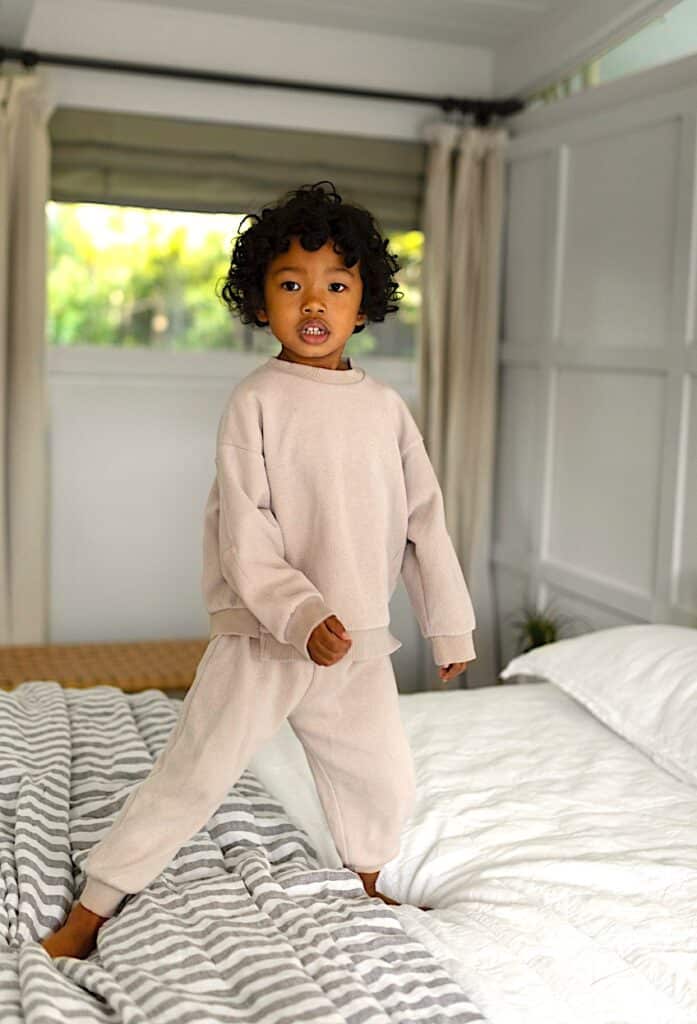
Quick Reference: Adjusting Firmness by Body Weight
(swipe ➡️ to see full table)
|
Build (Comfort + Support)
|
225-lb Adult |
150 lb Adult
|
70 lb ChilD
|
40 lb Child |
|---|---|---|---|---|
|
20 ILD + 28 ILD (Soft + Medium) |
Feels Soft |
Feels Medium-Soft |
Feels Medium |
Feels Medium-Firm |
|
24 ILD + 32 ILD (Medium + Med-Firm) |
Feels Medium-Soft |
Feels Medium |
Feels Medium-Firm |
Feels Firm |
|
28 ILD + 36 ILD (Med-Firm + Firm) |
Feels Medium |
Feels Medium-Firm |
Feels Firm |
Feels Extra-Firm |
|
32 ILD + 40 ILD (Firm + Extra-Firm) |
Feels Firm |
Feels Very Firm |
Feels Board-Firm |
Feels Unyielding |
As kids grow, you can simply flip layers or swap the order, move the firmer layer to the top, or replace the comfort layer later.
That modular flexibility is part of the beauty of DIY builds.
How to Read It
- ILD (Indentation Load Deflection) numbers describe material stiffness—not comfort.
- The lighter the sleeper, the less the layers compress, and the firmer the mattress feels.
- Around 150 lb, most adults experience latex ILDs roughly as labeled (“soft,” “medium,” etc.).
- At 225 lb+, the same build will feel softer and may require slightly firmer layers or thicker cores to maintain alignment.
Our Takeaway
“Firmness” isn’t a universal truth; it’s more a relationship between body weight and materials.
Firmness scales shift with body weight.
A latex build that feels cozy-medium to you will feel brick-firm to your 40-lb child, and soft to a heavier adult.
That’s why ILD charts are only half the story; who’s on the mattress tells the rest.
Light sleepers need softer surfaces to get the same healthy support that heavier sleepers do.
So when someone says “kids need a firm mattress,” remember: for little rebels, ‘firm’ feels firmer.
Quick In-Home Tests for the Perfect Feel
Before declaring a mattress “done,” try these simple checks:
1. The Side-View Check
Have your child lie as they normally sleep.
From the side, their spine should look nice and neutral, with no hammock-shaped sag, and no bowing.
2. The Palm Test
- For side sleepers: slide your hand between their waist and the mattress.
- For back sleepers: slide under the lower back.
You should feel light contact, not a big gap (too firm) or full sink-in (too soft).
3. The 10-Minute Settle
Kids’ bodies sink a bit after they relax.
Wait ten minutes and re-check alignment. If their shoulders or hips look squished, they need a touch more cushioning.
4. The Wiggle Test
If your child can roll around and change position easily, the firmness is good. If they have to climb out of a dent, yeah, it’s too soft.
5. The Morning Report
Ask: “Did you sleep cozy or bumpy?”
Kids mostly give brutally honest feedback. If they slept soundly and woke up happy, that’s the real test passed.
Where Firmness Matters (and Where It Doesn’t)
You may have heard that “kids need a firm mattress.”
That advice is half right and half myth.
The truth:
- Firm mattresses are recommended for infants (under ~1 year) for safety, not for healthy development. A firm, flat surface helps prevent suffocation and SIDS.
- Once kids are past the crib stage, the goal changes: now it’s about spinal support and comfort, not rigidity.
- Think ‘supportive’, not ‘stone-hard’.
- A mattress that’s too firm can actually cause pressure points (especially at shoulders and hips) and lead to restlessness.
- For toddlers and young kids (ages 3–7), a medium to medium-firm build supports natural alignment while allowing enough ‘give’ for comfort and movement.
Healthy growth depends far more on nutrition, daylight, and playtime than on ILD numbers.
